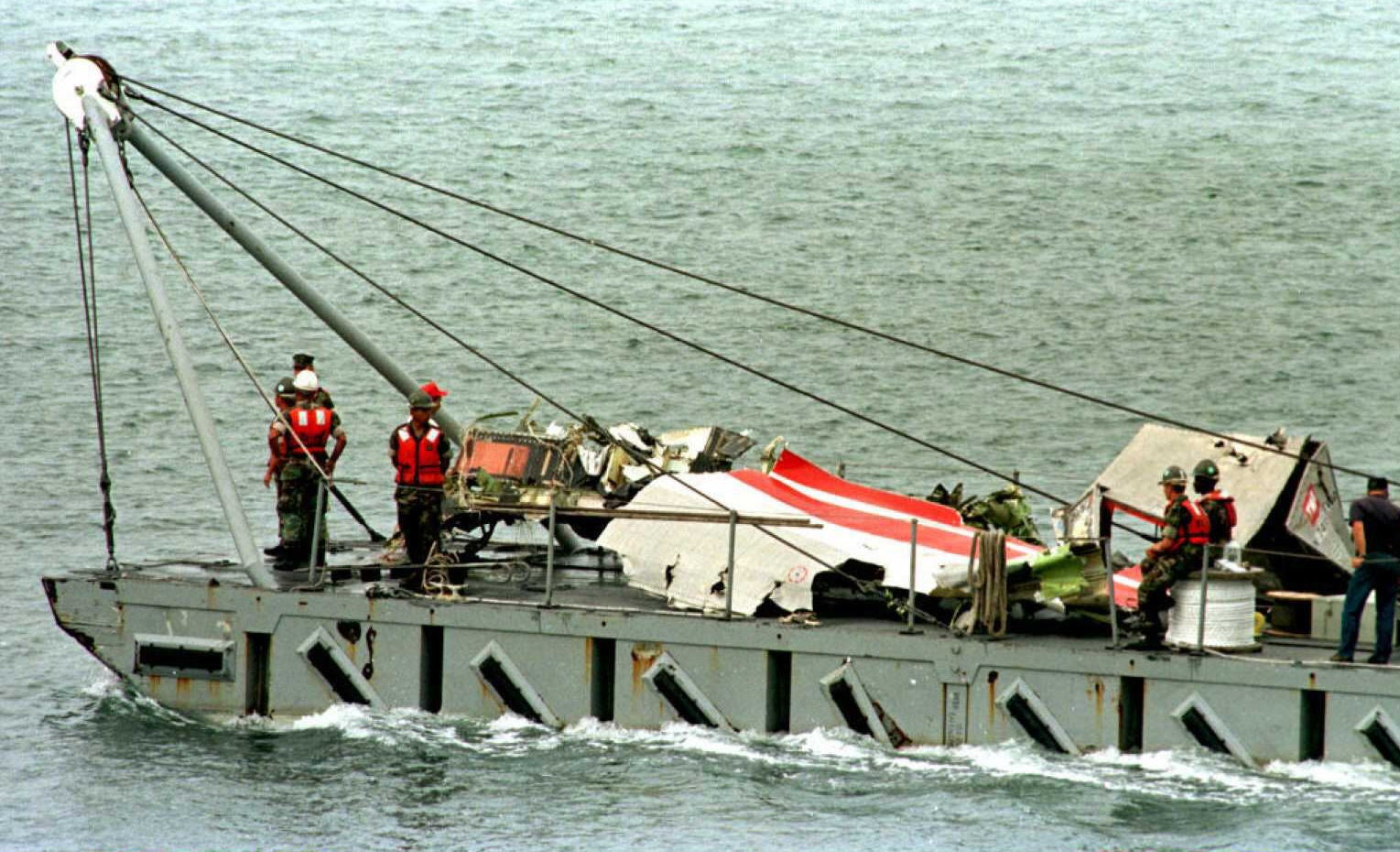TWA plane’s reconstructed wreckage to be destroyed 25 years after mid-air explosion
230 people died when the New York to Paris flight exploded over the Atlantic Ocean off Long Island in July 1996
Your support helps us to tell the story
From reproductive rights to climate change to Big Tech, The Independent is on the ground when the story is developing. Whether it's investigating the financials of Elon Musk's pro-Trump PAC or producing our latest documentary, 'The A Word', which shines a light on the American women fighting for reproductive rights, we know how important it is to parse out the facts from the messaging.
At such a critical moment in US history, we need reporters on the ground. Your donation allows us to keep sending journalists to speak to both sides of the story.
The Independent is trusted by Americans across the entire political spectrum. And unlike many other quality news outlets, we choose not to lock Americans out of our reporting and analysis with paywalls. We believe quality journalism should be available to everyone, paid for by those who can afford it.
Your support makes all the difference.The reconstructed wreckage of TWA Flight 800, painstakingly reassembled as part of the investigation into what happened to the Boeing 747, is set to be destroyed following the 25th anniversary of the tragedy.
The aircraft crashed at 8.30pm on 17 July 1996, just 12 minutes after take-off from New York’s John F Kennedy Airport en route to Paris.
All 230 people on board were killed in the mid-air explosion over the Atlantic Ocean off the coast of Long Island.
It remains one of the deadliest aviation accidents in US history. Adding to the tragedy was the ongoing suspicion that the explosion on board was the result of a terrorist attack.
Following the crash, a four-year investigation by the National Transportation Safety Board (NTSB) concluded that it was caused by a spark from an electrical fault which ignited a flammable mix of fuel and air in the central fuel tank.
As part of the investigation, more than 1,600 pieces of the plane were retrieved from the waters off New York and reassembled to determine what happened.
The NTSB has now announced that the haunting 93ft, 60,000-lb reconstructed shell of the plane, including the distinctive Boeing 747 upper deck windows, is to be destroyed.
The reassembled plane was moved from New York to Ashburn, Virginia in 2003 and has been used to train first responders and transportation safety investigators.
It has been kept out of public view as part of an agreement with the families of victims. However loved ones are allowed to visit, and some have left small tokens of remembrance on their late relatives’ assigned seats.
The lease is running out on the hanger where the plane is stored and the NTSB has decided it is no longer practical to maintain.
“After 25 years, family members realize it’s a reasonable amount of time for them to let it go,” said James Hall, who served as NTSB chairman during the TWA 800 crash and investigation. “Nevertheless, it’s bittersweet.”
Frank Hilldrup, an NTSB official on the original team of Flight 800 investigators, told CNN: “It’s been very useful, but I think we’ve gotten to the point now that it’s time to move on from that, but in a different way.”
Only a small number of aircraft have been reconstructed after crashes as part of the investigation. One was Pan Am flight 103 that crashed onto the town of Lockerbie in Scotland, in 1988. A terrorist bomb brought down the jetliner en route from London Heathrow to New York.
The scale of the operation to retrieve TWA Flight 800 was immense. The US Navy, FBI, 200 divers, 14 ships, remotely operated vehicles, and contracted fishing trawlers were deployed to recover 95 per cent of the plane over ten months.
After almost a year, the remains of all those who died were also recovered.

Suspicions of a terrorist attack were heightened by hundreds of eyewitness accounts of a “flare-like” object near the airliner before it burst into flames. Some onlookers used the term “rocket” or “missile” and conspiracies abounded.
Just five years before 9/11, the Clinton administration considered whether state-sponsored actors had carried out an attack on the US mainland.
When the real cause was deemed an accident, safety recommendations changed regulations concerning how planes are designed and built.
The 230 people on board TWA Flight 800 came from 14 countries and included 152 Americans and 40 French citizens.
There were 18 crew and 20 off-duty TWA employees on the flight who were intended to take the aircraft onwards from Paris to Rome.
Notable passengers included French hockey player Michel Breistroff, guitarist Marcel Dadi, the composer David Hogan, and interior designer and director Jed Johnson, Andy Warhol’s partner of 12 years.
In addition, there were 16 students and five adult chaperones from the French club of the Montoursville Area High School in Pennsylvania.
A private memorial service will be held on Long Island on Saturday for families of the victims.

Join our commenting forum
Join thought-provoking conversations, follow other Independent readers and see their replies
Comments